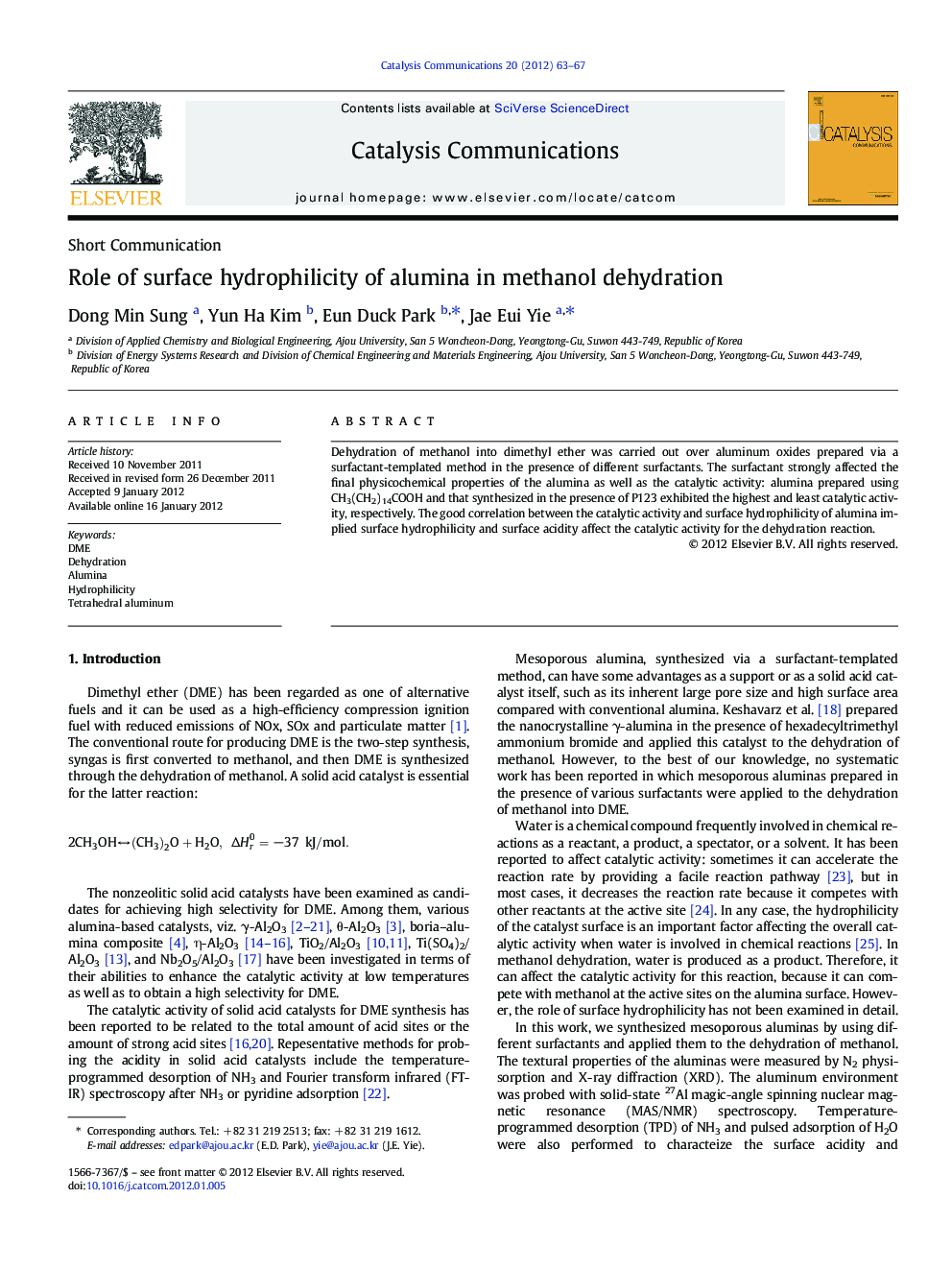| Article ID | Journal | Published Year | Pages | File Type |
|---|---|---|---|---|
| 50781 | Catalysis Communications | 2012 | 5 Pages |
Dehydration of methanol into dimethyl ether was carried out over aluminum oxides prepared via a surfactant-templated method in the presence of different surfactants. The surfactant strongly affected the final physicochemical properties of the alumina as well as the catalytic activity: alumina prepared using CH3(CH2)14COOH and that synthesized in the presence of P123 exhibited the highest and least catalytic activity, respectively. The good correlation between the catalytic activity and surface hydrophilicity of alumina implied surface hydrophilicity and surface acidity affect the catalytic activity for the dehydration reaction.
Graphical abstractFigure optionsDownload full-size imageDownload as PowerPoint slideHighlights► Various aluminas (γ-Al2O3) were prepared with different surfactants. ► The surfactant affected the physicochemical properties and the catalytic activity. ► The correlation between the catalytic activity and surface hydrophilicity was made. ► The surface hydrophilicity was related to the fraction of tetrahedral Al sites. ► The catalytic activity was related to the fraction of tetrahedral Al sites.
